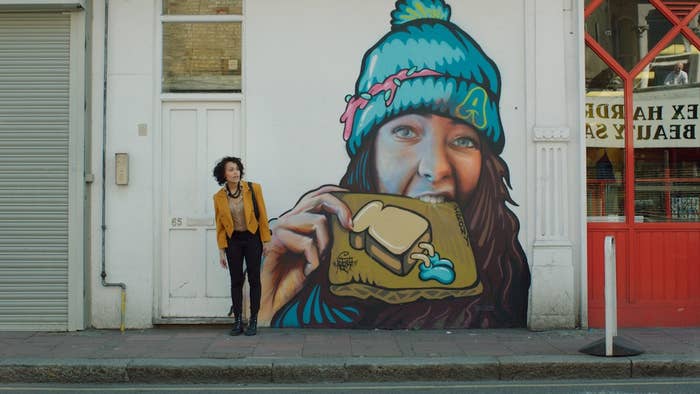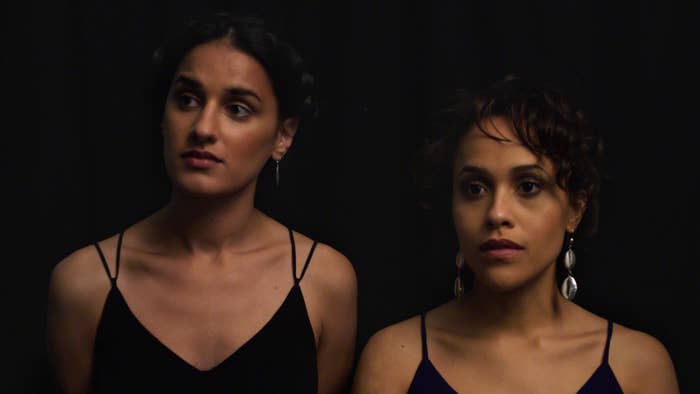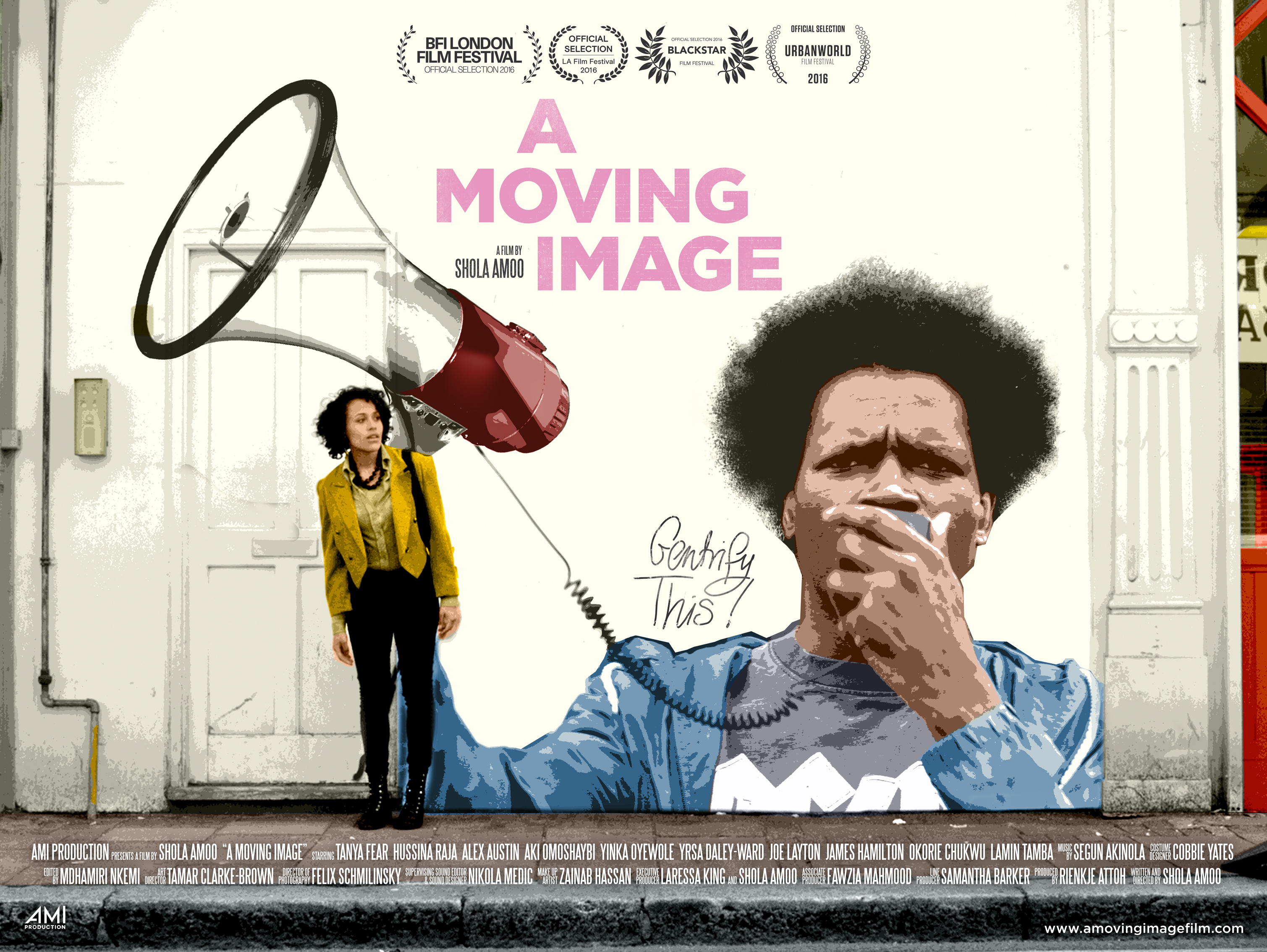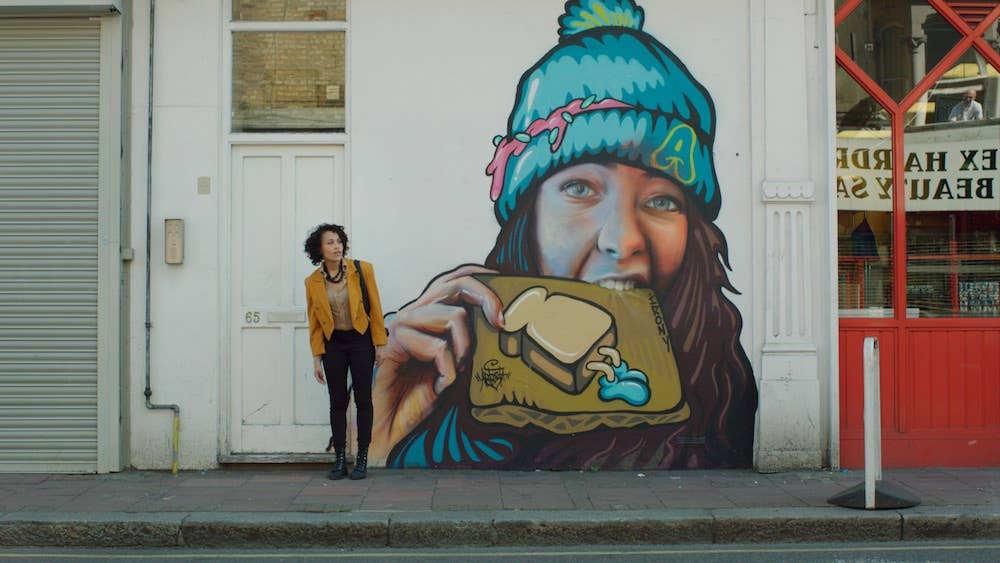
It would be an understatement to say that gentrification is a big topic right now. In major cities across the Western world, previously undesirable areas, usually with cheap land value and a large ethnic population, are now getting an influx of middle class, trendy young professionals moving in. It usually starts with young creative people looking for somewhere cheap, but soon enough property developers see their chance and luxury flats start to replace local amenities. There’s definitely some potential benefits; the area gets cleaned up and property prices increase. But decades-old communities get broken up and residents are forced out of where they grew up. You just need to look at Hackney in 2016, compared to 20 years ago.
A new film at this year’s London Film Festival tackles head on how this is happening in Brixton, a traditional culture hu of London's black communities. A Moving Image is the debut feature film from South London born-and-bred director Shola Amoo. Instead of just being a straight drama about the subject, it’s an innovative mixed-media work, including documentary, archive photography and even animation. It focuses on a twenty-something filmmaker and actress Nina, born in the area but returning to Brixton after a time away. She starts trying to document the changes she sees in the place, filming during the real life Reclaim Brixton protests, and interviewing genuine local residents. It’s an unusual, autobiographical film, that’s not afraid to suggest that the hipster-ish artist Nina - and therefore director Amoo himself - is actually part of the problem.
The film is rightfully getting its European premiere in the city it is set in, with several screenings across London including one at Brixton’s iconic Ritzy cinema. We caught up with Amoo to discuss the movie, and the issues involved.
Why did you chose to go for this more experimental approach, as oppose to making a straight drama or documentary?
I just didn’t think you could do a thing as complex as gentrification in drama. I didn’t think you could write a fictional script that would really get the nuance of the subject. I felt like it would need real people, I felt like it would need to be something that has that authenticity. And I responded to that with the other elements — the photography, the use of archive, animation — built from the need for something that could hold narrative but also with realness.
So did you start by trying to write a script then?
Yeah, I had half of the script. I knew Nina’s backstory and trajectory to some degree. I stopped there, because I wanted the process to tell me the film. The people we met and the events we went to dictated the narrative. Which is a really weird way of working. But what we found was that the fiction would respond to the documentary, and then documentary would respond to the fiction.
Is Nina meant to be you then, going on this journey?
Her character and me are going through the same psychosis about whether it means anything to make a film about that subject. Can art really make a difference? That was the question I was struggling with.
So which parts in the film are documentary? You’re filming in the middle of a Reclaim Brixton protest, speaking to people I presume are real….
So Reclaim Brixton is obviously a real protest, but we had a fictional character in a very real environment. And you can’t really control what happens with that. You’re shooting more documentary fashion but you’ve still got a fictional character, so it’s very bizarre. That’s the first insertion of the real world you see in the film. And the rest of it, I kind of enjoy people not knowing what’s fact and whats fiction, the lines are quite blurry. So I wouldn’t want to say directly and spoil it for people!
Nina is surrounded by other young people who represent other elements of gentrification; a white guy who’s bought a flat, a black artist organising protests etc. Are they based on people you know?
It’s a snapshot of a creative scene in South London. There’s an actor, a performance artist, a filmmaker etc. I’m around a lot of creative interesting people and we all struggled with the same question: What is the purpose of our art? Does it actually mean anything for anyone else, other than us? As well as gentrification, that’s the thrust of the film. It made sense to bring in some elements of characters I knew in my life who are artists to play that out on screen.
The character who’s coming into Brixton and buying a flat is only from Bermondsey. Honestly, I think there’s a bigger problem with rich kids coming from other parts of the UK, buying up property…
I see what you’re saying, but I wanted to give a credence to artists in that area — South London. Because where else are they going to get shown on film? That cultural scene hadn’t been put in a film, and I really wanted to give that a spotlight. I pretty sure there will be other films about those {rich kids}.

There’s lots of references to Shoreditch and Hackney in film, about how they’ve been completely changed by gentrification. Is Brixton going through exactly the same process, just a few years behind?
I think the distinct thing about Brixton is that it’s always been at the front of black intellectual thought. It’s always had that kind of political, left-wing, egalitarian quality to it. So that’s why the gentrification of Brixton is particularly hard to swallow. Because it’s the place where you expect it kick off. It feels like it’s the place that has the character and the people to really stop this. That’s why I set it in Brixton. I see Brixton very much as the black British community’s Harlem.
It feels like as it’s happening in other areas in London, like Walthamstow or wherever, we’re going straight from ‘undesirable’ locations with ethnic communities to luxury flats — it’s like the ‘cool interesting artist’ stage is getting skipped…
I agree. And it’s happening at a faster rate. It’s crazy. And I didn’t want to restrict it to London. There’s scenes where we go to Brooklyn, and Berlin, and Harlem — in those places and we try and show the international nature of it. We even had our world premiere at the LA Film Festival. Gentrification in LA is a crazy thing, in places like Echo Park or Boyle Heights. That’s one of the important things for me, the international nature of gentrification. We’ve got this interactive website that we’re building, that will enable people to send videos from all over the world, from Boyle Heights, or Harlem or London, and we can all see these videos, share ways of addressing the issues and hopefully build a platform.
What’s the reaction been like internationally?
It’s been really amazing We had a sold out screening at the LA Film Festival, and there was an amazing discussion. It really showed me how universal gentrification is, because people could relate to it so clearly, even though it is very specifically South London. We won an award at a festival in Philadelphia, and the Philly audience understood gentrification. And then we played at a festival in New York, and New York’s relationship with gentrification is very clear. So it’s been very engaged — and a very vocal crowd! I’m intrigued to see if it’s going to be as vocal in the UK!
That’s great to hear — I was worried it was full of London references international audiences wouldn’t get…
Well when you’re talking about the hipster apocalypse in East London, they don’t really get that! But they get it from the way people dress, the way they move, their interactions, they get what the film is about.
How much do you think gentrification is a race issue?
I think there’s no way of ignoring race in it. The dichotomy of race and class and how that breaks down is a better way of looking at it. But definitely when you are looking at places like Peckham, which is very Nigerian, or Brixton, which is a bit more Caribbean, and you see people being pushed out or shops from that community closing, there’s no way not to engage with that racially. What I can say though is the relationship between race, class and gentrification in this country is really tricky, and needs a lot more detail in its analysis.
It’s sometimes hard to why people would want to move to an area with a unique culture, only to start to dismantle it…
It’s like what Spike Lee described as ‘Columbusing’. He was lamenting that in Brooklyn people have been making noise in the streets and being loud for years, but it’s only recently now that the police are getting called. It’s like if you move to an area, you have to appreciate the culture that’s in that space. No one has any qualms with people moving it, they just have to be respectful of the knowledge and energy of that area’s culture, and let that thrive. Enjoy your space in that community, but let that thrive. And I’ve heard stories of this happening in Brixton. Windrush Square has always had that lively energy, and now there’s a larger police presence — that kind of thing. If you’re saying it’s the vibrancy that you love about this community, then don’t kill that. Let it flourish.
Some people would say that the inhabitants of these places should be embracing the newcomers, cleaning up the area, bringing in money and raising house prices. What would you say to that?
For me it’s very basic. It’s a question of inclusivity versus exclusivity. I don’t think anyone minds nicer things in their community, but if they don’t feel like they have a stake in that, or can’t access them, then it’s a problem. They’ve put blood, sweat and tears into those communities. And I think a lot people don’t have access to those new things, it’s too exclusive. It’s not including them.
Obviously there are no easy answers to this. But do you think we can do?
My personal answers? The first thing I do is split gentrification into a micro and a macro thing. On a micro level it’s the individual, your complicity, how you engage with you space. Where you spend money. Who you endorse. Your relationship with the community. That, you have control over. So if there is a shop that, I don’t know, has just come in and jettisoned the local businesses, perhaps you think about {not shopping there}. But then on a macro level, we’re talking about government, we’re talking about legislation. Local councils regenerating instead of refurbishing. And how you engage with that is being active in the various anti-gentrification groups that are springing up across the country and internationally. You can see what they are up to, share tactics. That’s the point of the interactive website we’re building, is to bring this all together. The point was always to make something more than the film. I’m hoping people will send in their videos, so we can all see how people are struggling, and build this map of gentrification all over the globe.

A Moving Images is screening at the London Film Festival on the following dates:
Saturday 08 October 2016 18:30
Vue West End Cinema, Screen 5
Friday 14 October 2016 18:30
Ritzy Cinema, Screen 2
Sunday 16 October 2016 18:00
Hackney Picturehouse, Screen 1
Full details here.

